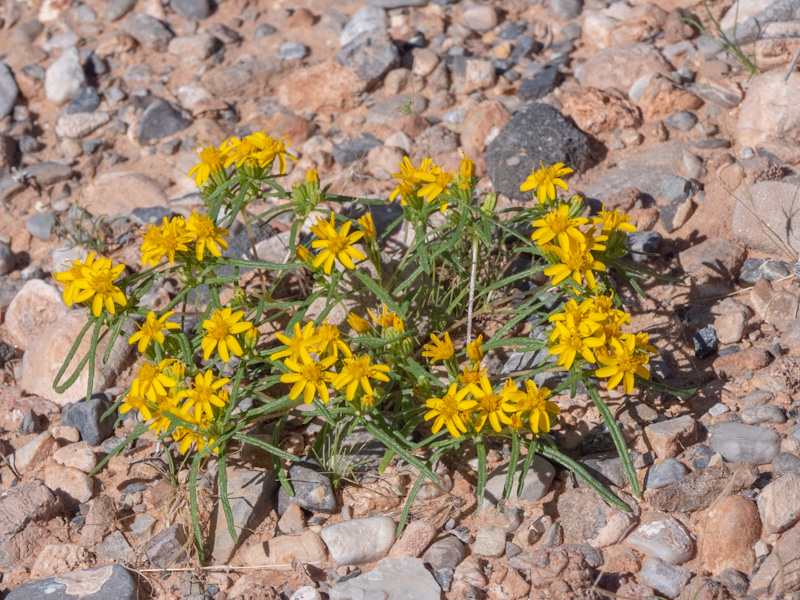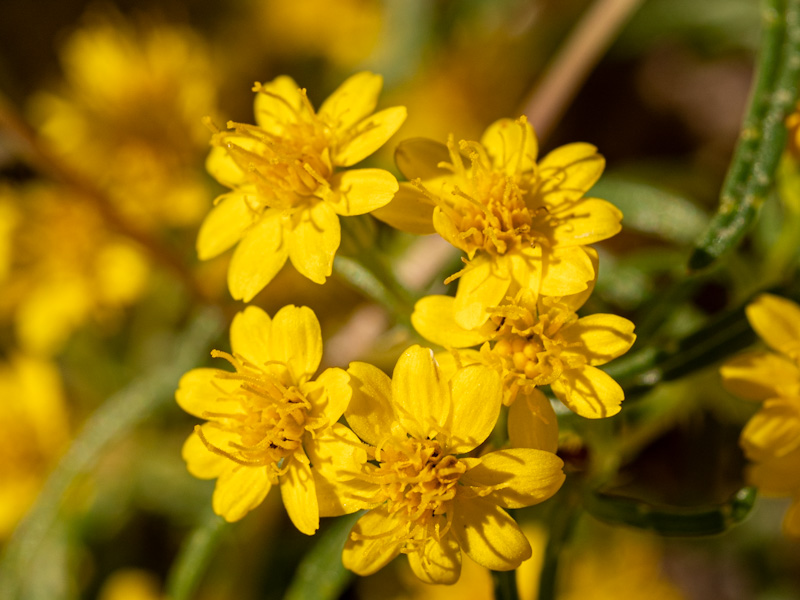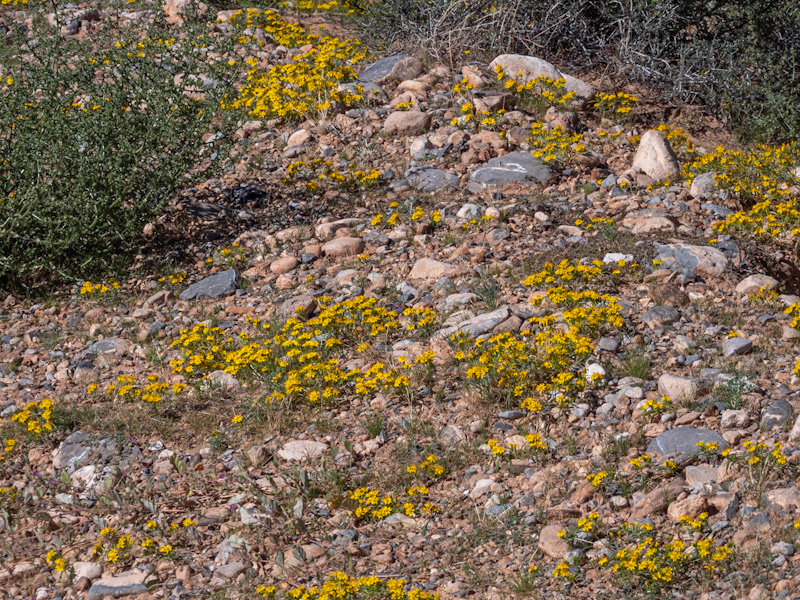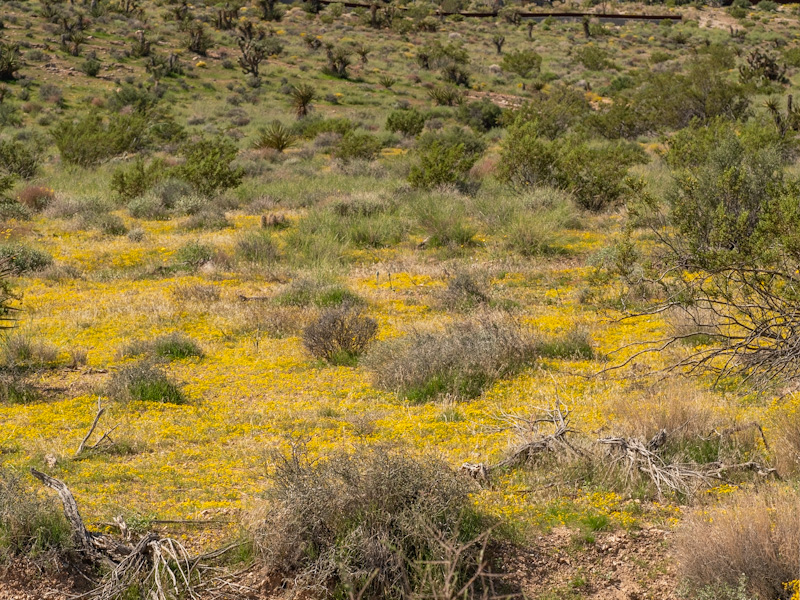
Common Names: Cinchweed, Chinchweed, Fetidmarigold, Common Chinchweed, Desert Cinchweed, Many-bristle Chinchweed, Many-bristle Fetid-marigold; Spanish: Manzanilla del Coyote, Limoncillo
Synonyms: Pectis angustifolia
Family: Asteraceae (Aster/Daisy/Sunflower)
Habit: annual forb, herb
Size: up to 10 inches
Flowers: yellow
Bloom: Jun, Jul, Aug, Sep, Oct, Nov, Dec
Leaves: opposite
Fruit: cypsela
Description:
The 0.5-2.5 inch leaves are linear and opposite with embedded scented oil glands that can have a cumin or lemon fragrance. Bright yellow flowers, small heads in clusters of 2 to 4 or more on leafy branch tips. Linear bracts surrounding flowering heads.
The Seri call the plant casol, casol heecto (“small casol”), casol ihasii tiipe (“fragrant casol”), and cacatajc (“what causes vomiting”) and use it medicinally. The Pima use a decoction of the plant or the dried plant itself as a laxative. The Zuni people take an infusion of the whole plant as a carminative, and use an infusion of the flowers as eye drops for snowblindness. They also use the chewed flowers as perfume before dancing in ceremonies of “the secret fraternities”. The Havasupai parch and grind the seeds and use them to make mush and soup. They also dip the fresh plant in salt water and eat it with mush or cornmeal as a condiment. The Pueblo use it as a spice.
Distribution: AZ, CA, NM, NV, TX, UT
Seen: NV (Red Rock Canyon)
Habitat: arid plains, rocky slopes, below 6,000 feet (1,829 m)



References:
